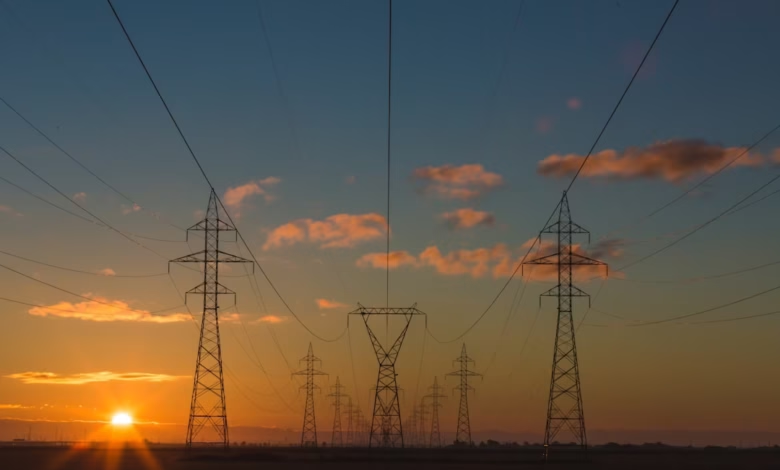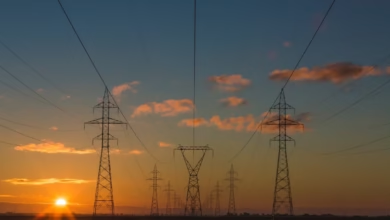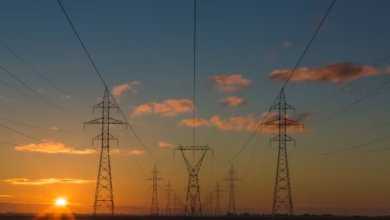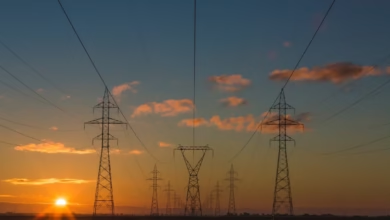Navigating the Energy Transition: How Renewable Energy and Innovations Combat Climate Change

As the world grapples with the urgent challenges of climate change, the role of energy in mitigating global warming has never been more critical. The energy transition towards renewable sources is not just a trend; it is a necessity for a sustainable future. With the increasing reliance on fossil fuels, the impacts of carbon emissions have become alarmingly evident, prompting a shift in energy policies worldwide. This article explores how renewable energy—ranging from solar power to wind energy—plays a pivotal role in combating climate change. We will evaluate the environmental consequences of fossil fuels and nuclear energy while highlighting innovations in energy storage and efficiency that are paving the way for a greener planet. By understanding current global energy trends and the significance of energy investments, we can better appreciate the interconnectedness of energy markets and climate resilience. Join us as we delve into the multifaceted relationship between energy and climate change, examining how smart grids, hydrogen energy, and carbon capture technologies contribute to a sustainable energy future, ultimately securing our planet for generations to come.
- 1. The Energy Transition: How Renewable Energy is Key to Combating Climate Change
- 2. Evaluating the Impact of Fossil Fuels and Nuclear Energy on Global Warming
- 3. Innovations in Energy Storage and Efficiency: Paving the Way for a Sustainable Future
1. The Energy Transition: How Renewable Energy is Key to Combating Climate Change
The energy transition plays a crucial role in addressing climate change, as it shifts our reliance from fossil fuels to renewable energy sources. This transition is not only essential for reducing greenhouse gas emissions but also for enhancing energy security and creating sustainable energy markets.
Renewable energy, including solar power, wind energy, hydropower, and bioenergy, is pivotal in combating global warming. These sources provide cleaner alternatives to fossil fuels, which are the primary contributors to carbon emissions. By investing in green energy technologies and expanding energy efficiency measures, we can significantly lower our carbon footprint while meeting the growing energy demands of a global population.
Energy storage solutions are vital for integrating renewable energy into our existing energy systems. Technologies like batteries and pumped-storage hydropower allow us to store excess energy generated from solar and wind sources, ensuring a reliable supply even when weather conditions are unfavorable. Furthermore, innovations in thermal energy and hydrogen energy can complement renewables by providing additional flexibility in energy transportation and distribution.
The implementation of smart grids is another essential component of the energy transition. These advanced energy systems enable better management of energy consumption and distribution, improving the overall efficiency of energy networks. By facilitating the integration of distributed energy resources, smart grids enhance our ability to harness renewables while ensuring stability within energy markets.
Energy policy plays a critical role in driving this transition. Governments must prioritize energy R&D and support initiatives that promote renewable energy investment and carbon capture technologies. By fostering a favorable environment for innovation and sustainable practices, policymakers can encourage the growth of the green energy sector.
Moreover, trends in global energy economics indicate a shift towards more sustainable energy exports and imports. Countries are increasingly recognizing the importance of diversifying their energy sources and investing in offshore energy projects. This not only helps mitigate the effects of climate change but also boosts energy security by reducing dependency on fossil fuels.
In conclusion, the energy transition is vital in the fight against climate change. By embracing renewable energy, enhancing energy efficiency, and investing in innovative technologies, we can create a sustainable energy future that addresses the challenges posed by global warming while meeting our energy needs.
2. Evaluating the Impact of Fossil Fuels and Nuclear Energy on Global Warming
The role of energy in combating global warming is a complex and multifaceted issue, particularly when evaluating the impact of fossil fuels and nuclear energy. As the world grapples with climate change, the energy sector remains a critical focus in mitigating greenhouse gas emissions and promoting sustainable practices.
Fossil fuels, which include coal, oil, and natural gas, have long been the backbone of global energy markets. They account for a significant portion of the world's energy consumption and are major contributors to carbon dioxide emissions. The combustion of fossil fuels releases vast amounts of greenhouse gases into the atmosphere, exacerbating global warming and driving climate change. Transitioning away from fossil fuels toward renewable energy sources is essential for achieving climate goals and enhancing energy efficiency. This energy transition involves implementing energy policies that promote investments in solar power, wind energy, and other green energy technologies.
Conversely, nuclear energy presents a low-carbon alternative to fossil fuels. Nuclear power plants generate electricity with minimal greenhouse gas emissions, making them a crucial component in the fight against climate change. However, concerns regarding nuclear waste management, energy security, and the potential for catastrophic failures have led to public apprehension and uneven support across different regions. Balancing these challenges is essential for harnessing the benefits of nuclear energy while ensuring safety and sustainability.
As global energy trends shift towards cleaner technologies, the integration of energy storage solutions, such as batteries and pumped hydro, becomes increasingly important. These innovations enable the effective use of intermittent renewable energy sources, like solar and wind, ensuring a stable energy supply and reducing reliance on fossil fuels. Additionally, advancements in energy R&D, including carbon capture technologies, can help mitigate the impact of fossil fuel use by capturing emissions before they enter the atmosphere.
Moreover, the development of smart grids and distributed energy systems enhances energy efficiency and reduces energy waste. These systems facilitate the integration of various energy sources while improving energy transportation and management. As countries aim to increase their energy exports and imports, investment in renewable energy infrastructure and energy innovations will be key to achieving energy security and supporting a sustainable energy future.
In summary, while fossil fuels have played a dominant role in the global energy landscape, their impact on climate change cannot be overlooked. Nuclear energy offers a low-carbon alternative, but its challenges must be addressed. The transition to renewable energy sources, supported by energy efficiency measures and advanced technologies, is vital for reducing greenhouse gas emissions and combating global warming effectively.
3. Innovations in Energy Storage and Efficiency: Paving the Way for a Sustainable Future
Innovations in energy storage and efficiency are at the forefront of the battle against climate change, serving as vital components in the transition to a sustainable future. As the world shifts from fossil fuels to renewable energy sources, the ability to store and utilize energy efficiently becomes increasingly crucial.
Energy storage technologies, such as batteries and pumped hydro storage, are essential for managing the intermittent nature of renewable energy sources like solar power and wind energy. These innovations allow for the capture of excess energy generated during peak production times, which can then be released during periods of high demand or low generation. This capability not only enhances energy security but also stabilizes energy markets by mitigating fluctuations in supply and demand.
One of the most promising developments in energy storage is the advancement of battery technologies, particularly lithium-ion and emerging solid-state batteries. These innovations are paving the way for more widespread adoption of electric vehicles and renewable energy systems, contributing significantly to carbon capture efforts by reducing reliance on fossil fuels. Additionally, investments in hydrogen energy storage solutions present a unique opportunity to store excess energy in the form of hydrogen, which can be utilized as a clean fuel alternative.
Energy efficiency is another critical area of focus. By optimizing energy consumption in buildings, transportation, and industrial processes, we can significantly reduce overall energy demand. Smart grids are instrumental in this regard, enabling real-time monitoring and management of energy use, which helps integrate distributed energy resources into the grid. This modernization of energy transportation and distribution allows for more efficient energy delivery and supports the broader adoption of green energy technologies.
Innovations in thermal energy systems, such as advanced heat pumps and combined heat and power (CHP) systems, further enhance energy efficiency by utilizing waste heat and improving the overall energy conversion process. These technologies not only lower energy consumption but also contribute to the reduction of greenhouse gas emissions.
As global energy trends evolve, energy policy must adapt to support these innovations. By fostering an environment conducive to energy R&D and prioritizing investments in sustainable technologies, governments can help accelerate the energy transition. Encouraging the development of offshore energy resources and bioenergy can also diversify energy portfolios, making them more resilient to market fluctuations.
In conclusion, the future of energy lies in the continuous innovation of storage and efficiency technologies. By prioritizing these developments, we can create a more sustainable energy landscape that effectively combats climate change while ensuring energy security and economic stability. The path forward will require collaborative efforts from industry stakeholders, policymakers, and researchers to realize the full potential of these energy innovations.
In conclusion, the fight against climate change hinges significantly on our approach to energy. As outlined in the article, the energy transition towards renewable energy sources—such as solar power, wind energy, and hydropower—is essential for mitigating global warming. Evaluating the impacts of fossil fuels and nuclear energy reveals that while these energy sources have historically powered economies, their role must be reevaluated in light of their contributions to greenhouse gas emissions.
Innovations in energy storage and efficiency are paving the way for a sustainable future, demonstrating that advancements in technologies like smart grids, energy transportation, and energy R&D can enhance energy security and optimize energy markets. Additionally, the integration of distributed energy systems and the exploration of hydrogen energy and bioenergy further exemplify the potential for a greener energy landscape.
As we navigate global energy trends and formulate effective energy policy, investments in renewable energy innovations and carbon capture technologies are vital. The shift toward electric vehicles and energy-efficient practices will not only reduce our carbon footprint but also foster economic growth through energy exports and imports. Ultimately, a collaborative effort among governments, industries, and communities is necessary to secure a sustainable future, ensuring that our energy choices contribute positively to combating climate change.
By embracing this energy transition, we can build a resilient, low-carbon economy that safeguards our planet for future generations.





